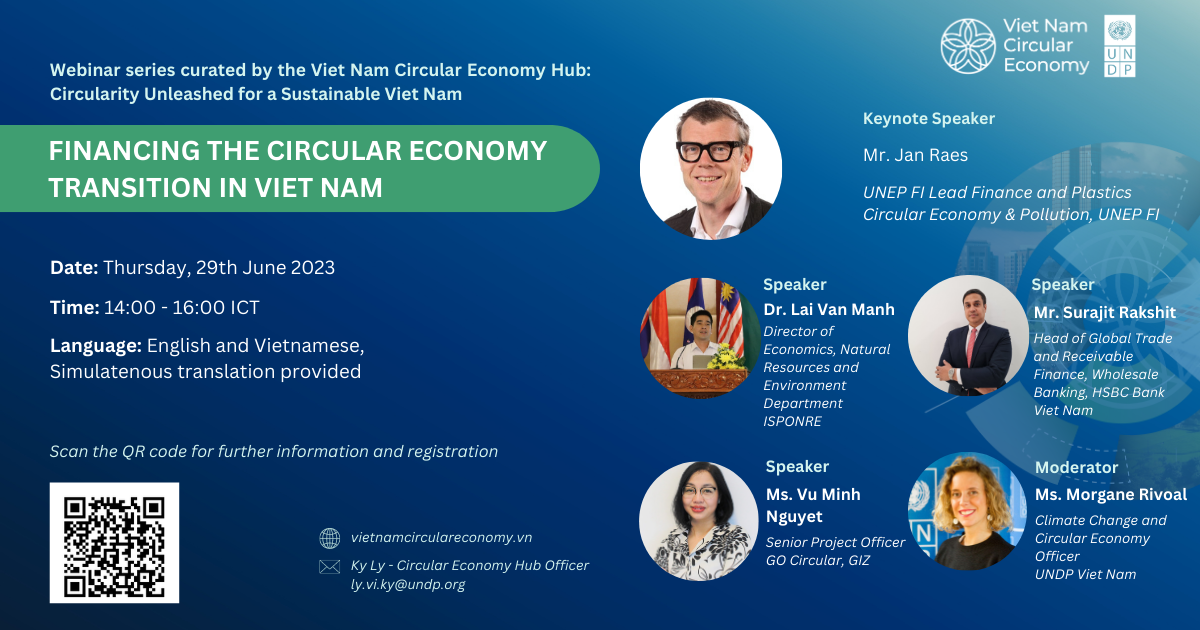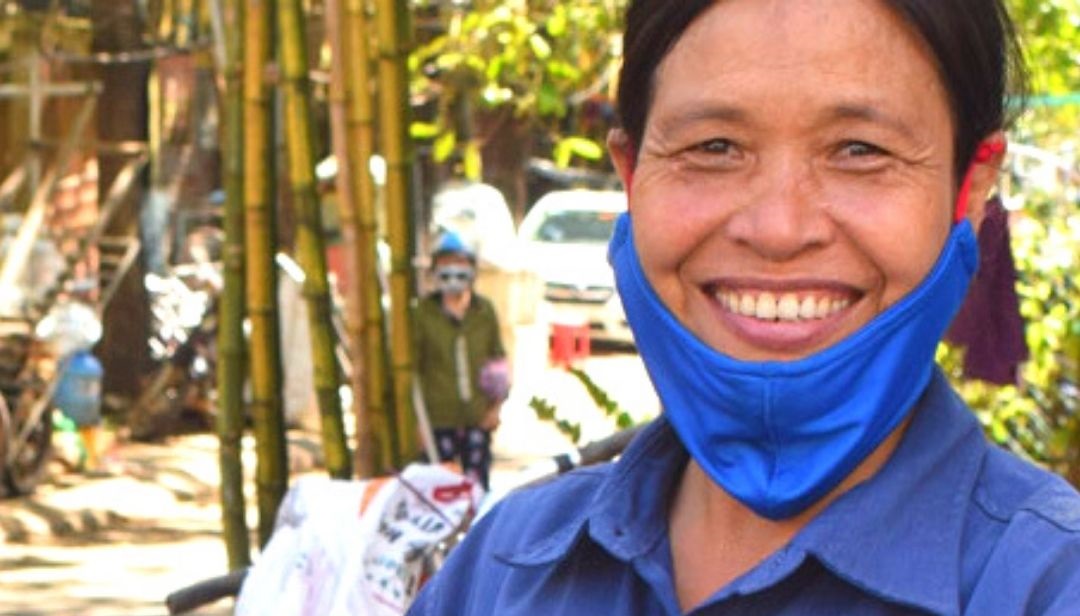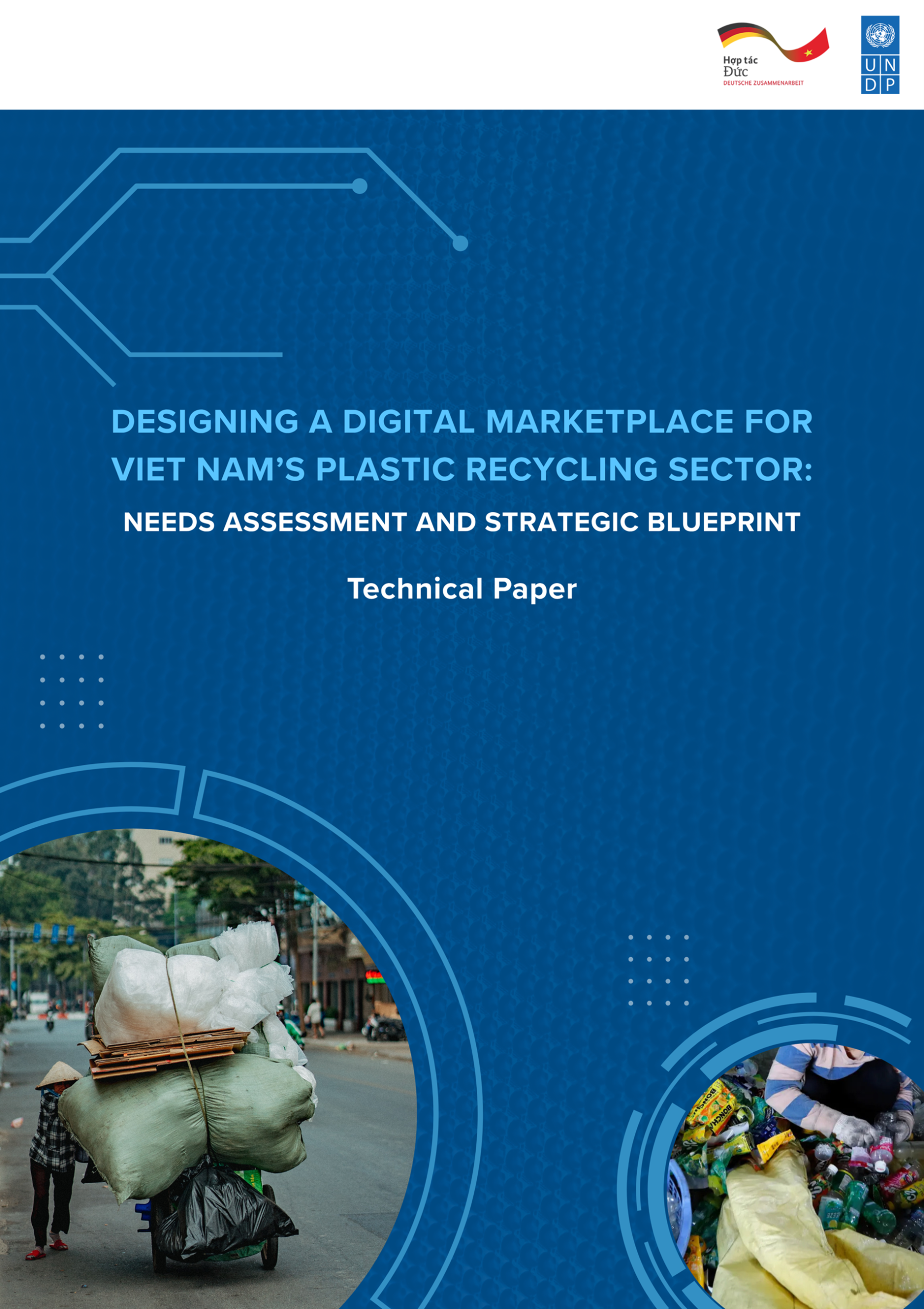Financing the circular economy transition in Viet Nam

The recording of the session, as well as the presentations and resources shared by the speakers, are available at this link.
“Financing the Circular Economy Transition in Viet Nam,” the second webinar in the series “Circularity Unleashed for a Sustainable Viet Nam,” occurred on Thursday 29 June 2023. The event, which assembled 70 experts and CE practitioners from Viet Nam, the UK, Germany, Hong Kong, Singapore, Italy, and Bangladesh, shared about different financial mechanisms that can be leveraged to support the Government of Viet Nam and businesses in adopting circular practices.
Mr. Jan Raes, Lead on Finance and Plastics at the UNEP Finance Initiative, commenced the webinar by discussing how to scale up circular economy finance. He emphasized that transitioning to a circular economy requires job creation and financial redirection towards preventing and managing waste as well as re-designing products and services, and outlined five key drivers to increase the volume of CE finance and help with achieving the goal: (i) a national policy on circular economy, (ii) a circular economy taxonomy policy, (iii) a just transition, (iv) public-private partnerships, and (v) product standards. All these points were subsequently backed with case studies and international experience from developing countries.
Dr. Lai Van Manh, Director of the Department of Economics, Natural Resources and Environment, ISPONRE provided an overview of financial instruments available in Viet Nam to support the transition to a circular economy. He highlighted that while half of green credits have been issued to energy projects, other potential circular sectors such as water and waste accounted for less than 10 percent. Furthermore, although the value of green bonds increased significantly from 2019 to 2021, they amounted to only USD 1.8 billion, the lowest compared to neighboring countries. He also stressed the need for improving accessibility to special offers for people and organizations, exploring novel financial instruments such as plastic credits and venture funds, and underwriting solutions to scale up circular finance.
Ms. Vu Minh Nguyet, Senior Project Officer for GO Circular at GIZ in Viet Nam, focused on the textile industry and identified barriers to investments in a circular economy: large upfront investment costs, an insufficient regulatory environment, and a lack of available blending instruments. However, Viet Nam’s textile and garment industry has been integrating some CE concepts to consume fewer natural resources, including energy and non-renewable resources such as water, while environmental certifications for final products and suppliers along the value chain are also being requested to align with the international textile standards. Nevertheless, private sector investments are crucial for promoting sustainable production in general, along with raising stakeholder awareness, improving access to finance (especially for SMEs), and providing incentives for green growth through fiscal policy instruments and tools.
Mr. Surajit Rakshit, Country Head of Global Trade and Receivables Finance at HSBC Viet Nam, shared the perspective of a private financial institution with regards to circular economy finance. He acknowledged the barriers in shifting to a circular economy which had been mentioned by other speakers, but categorized them in terms of pressing levels. He consequently discussed HSBC’s commitment to building a net-zero global economy, their sustainable finance solutions, and how they partner with companies to build a climate-friendly economy, find supply chain efficiencies, and adapt business models. Examples included HSBC’s green deals with a Vietnamese recycling company, an international container board manufacturer, and a leading cotton yarn manufacturer and distributor.
Key takeaways
- A national circular economy policy for creating a finance-friendly climate in the country will lead to increased investments for national and local circular initiatives.
- Clarity in circular taxonomy will help to unlock additional investment and keep track of market players developing sustainable, circular business models.
- Public-private cooperation can mitigate or share risks and encourage investments in circular businesses via public finance.
- Raising awareness among businesses about circular practices and financial support will assist in the shift towards circular models.
- Improved access to finance and incentives for green growth are needed, particularly for SMEs.
About the webinar series:
- Learn more about the webinar series by accessing the registration link.
- Catch up on the first webinar “Measuring Circular Economy Policies: Frameworks and Metrics” in the series via this link.












